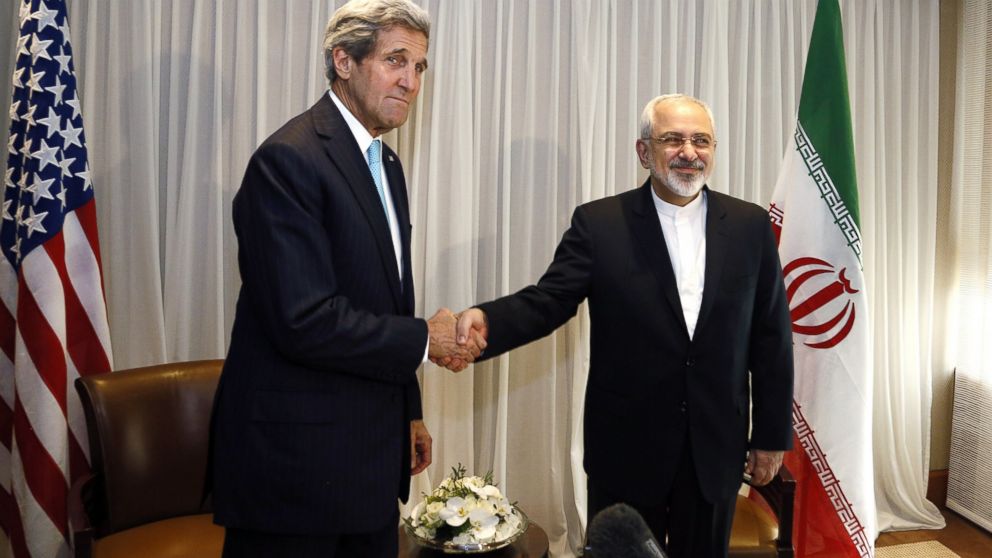Everything You Need to Know About the Iran Nuclear Negotiations

— -- A Brief History
This deal has been in the works since November 2013. That's when Iran and the so-called P5+1 (U.S., U.K., France, Russia, China and Germany) agreed on a Joint Plan of Action, an interim agreement that paved the way for talks by temporarily halting Iran's nuclear enrichment program and subjecting it to daily inspections in exchange for the loosening of some economic sanctions. In November 2014, Secretary Kerry announced an extension of the deadline for an interim agreement until March 31. And on April 2, after eight straight days of high-level diplomatic talks, an interim deal was reached.
What Was The Interim Deal?
A U.S. fact sheet provided at the time said Iran's nuclear breakout time -- the time it would take the country to build a bomb -- would be shifted from 2-3 months to a year. It said Iran’s deep buried nuclear facility will be converted from a nuclear site into a peaceful physics and technology center. No fissile material would remain there. Iran agreed not to enrich uranium over 3.67 percent (20 percent is considered weapons grade) for the next 15 years and to dilute or sell its existing stockpile of enriched uranium, reducing that stockpile by a total of 98 percent. Upon verification of these steps many United Nations and European financial sanctions would be lifted. Other sanctions, including those approved by Congress, will be lifted in a phased approach. A final agreement would have to be reached by June 30.
How Close Are They To A Final Deal?
As Kerry put it last Thursday, "I’m hopeful, but I’m not declaring optimism." Despite televised comments this week where the Iran’s supreme leader, Ayatollah Khomeini, appeared to pull away from the most basic principles of the interim agreement, State Department officials insist that behind closed doors those matters are resolved. They say at this point it’s a very technical discussion. On Wednesday, Kerry dismissed the Ayatollah’s comments as bluster made for domestic political consumption. He also said plainly that if those were Iran’s actual negotiating terms there would be no deal. At this point completion of a deal hinges on a few very difficult stumbling blocks.
What Are The Stumbling Blocks?
The negotiations are intensely focused right now on the pace and scope of sanctions relief for the Iranians. All that the West wants is to stop Iran’s pathway to a bomb; and all Iran wants is economic relief. What the Iranians care about most is lifting the United Nations sanctions. Those sanctions prevent Iran from doing business with the US, but also from most of the industrialized world. Publicly the Iranians are saying they will not allow inspection of military sites. But for the U.S. that is a non-starter; and officials say indeed the Iranians will concede this point. The negotiating parties are stuck on which sanctions to lift and when, and by what verification process. Also critical in this debate is the issue of snapping back sanctions.



